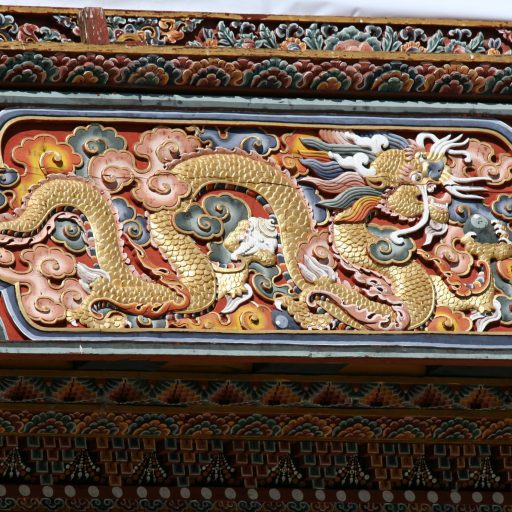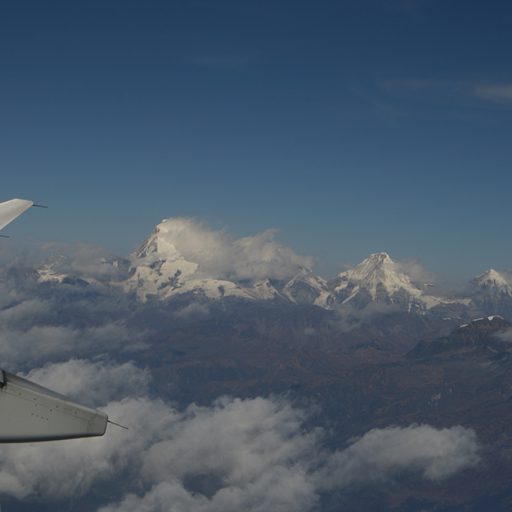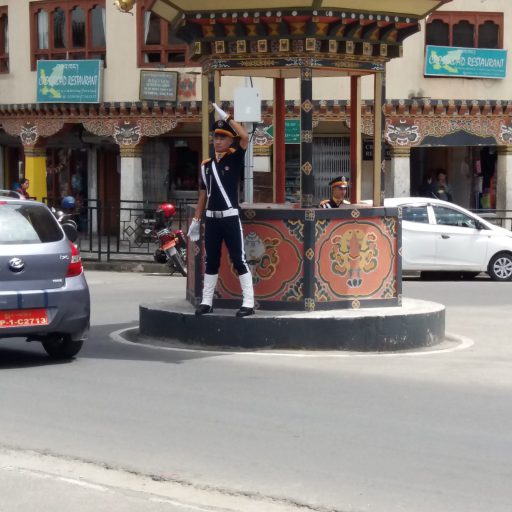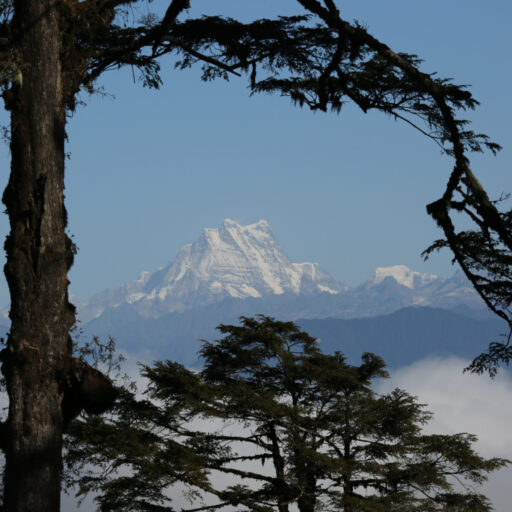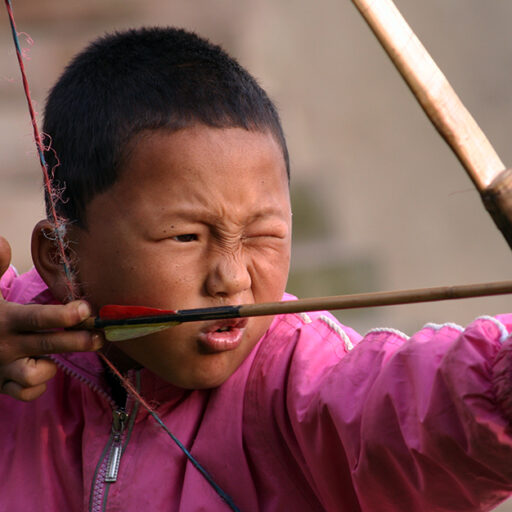Bhutan - Das Land des Donnerdrachen
Druk Yul ist der traditionelle Name für Bhutan und bedeutet “ Land des Donnerdrachen “ , ein Hinweis auf seine wilden Gewitter, die die Täler von den Gipfeln des Himalaya treffen. Es wurde angenommen, dass das blendende Licht des Donners das Feuer eines Drachen war. Bhutan war im Laufe der Jahrhunderte unter vielen Namen bekannt, darunter Lho Jong (Die Täler des Südens); Lho Jong Men Jong (Die südlichen Täler der Heilkräuter); und Lho Mon Tsenden Jong (Sandelholzland).
Willkommen in Bhutan
Sie können sowohl auf dem Luftweg als auch über Land nach Bhutan reisen. Es gibt Flüge zum internationalen Flughafen von Bhutan in Paro von Bangkok, Katmandu, Singapur, Dhaka, Delhi, Kolkata, Siliguri und Guwahati. Der Flug ist spektakulär, führt entlang des Himalaja und dann durch enge Täler nach Paro. Einige der Achttausendergipfel – Kangchenjunga, Lhotse, Everest und Makalu – sind besonders während des Fluges von Katmandu und Delhi nach Bhutan zu sehen. Über Land können Sie Bhutan von den Ebenen Indiens aus durch die Grenzstädte Phuentsholing im Südwesten und Samdrup Jongkhar im Südosten von Bhutan erreichen.
Die Haupstadt Thimphu
Thimphu ist die Hauptstadt und größte Stadt von Bhutan. Sie liegt im westlichen Teil von Bhutan und das umliegende Tal ist einer von Bhutans Dzongkhags (Distrikt), dem Thimphu-Distrikt . Die alte Hauptstadt Punakha wurde 1955 als Hauptstadt von Thimphu ersetzt. Im Jahr 1961 wurde Thimphu vom dritten König, dem Druk Gyalpo, Jigme Dorji Wangchuck, offiziell zur Hauptstadt des Königreiches Bhutan erklärt. Die Stadt erstreckt sich in Nord-Süd-Richtung am Westufer des Tals, das von dem Fluss Wang Chuu oder Thimphu Chuu gebildet wird . Thimphu ist die fünfthöchst gelegene Hauptstadt der Welt und liegt auf einer Höhe von 2248 bis 2648 Meter. Ungewöhnlich für eine Hauptstadt ist, dass Thimphu keinen eigenen Flughafen hat, sondern sich auf den Flughafen in Paro stützt, der 54 km von Thimphu entfernt liegt. Auch wenn die Anzahl der Fahrzeuge in den letzten Jahren zunahm, gibt es in Thimphu immer noch keine Ampeln.
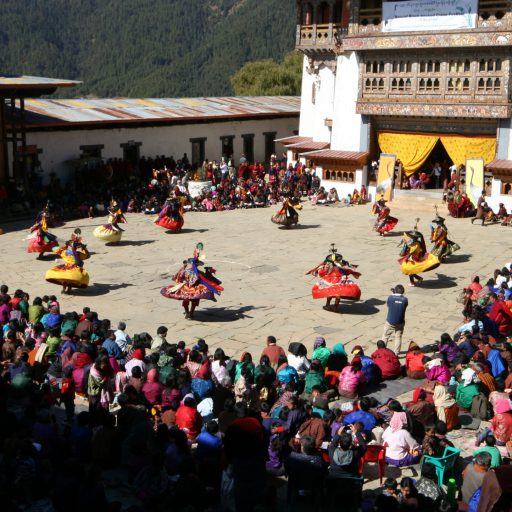
Festivals
Bhutan is rich in cultural diversity and this richness is further enhanced by the wide variety of elaborate and colorful religious festivals that are celebrated throughout the country. Every village is known for their unique festival though the most widely known is the annual Tshechu, meaning a religious festival.
As the Tshechu begins, the villagers and the general populace dress in their finest clothes and congregate at their local temples and monasteries were these festivals take place. Tshechus are usually occasions to mark important events in the life of the second Buddha, the Indian/Pakistani Tantric master known as Guru Rinpoche or the Precious Gem. Various mask dances are performed together with songs and dances for three days.
These religious celebrations are lively, high-spirited affairs during which people share meals of red rice, spicy pork, Ema Datshi and Momos (pork dumplings) whilst drinking the traditional rice wine known as Ara. These occasions provide the villagers with a respite from the hard labor of their day-to-day lives and gives the community an opportunity to catch up with family and friends.
Gangkhar Puensum
Gangkhar Puensum is the highest mountain in Bhutan, the 40th highest peak in the world and the highest unclimbed mountain in the world, with an elevation of 7,570 meters and a prominence of 2,995 meters. Its name means “White Peak of the Three Spiritual Brothers”. It lies on the border with Tibet. As surprising as it may sound, Gangkhar Puensum still remains unclimbed, especially when most peaks in the Himalayas have already been scaled decades ago. Bhutan opened itself to mountaineering only in 1983, as it was believed that towering mountains were the dwellings of spirits. When Bhutan finally opened its doors to mountaineering, a series of expeditions were organized. Between 1985 and 1986, four attempts were made, but all ended in failure. The decision to allow mountaineering as a commercial pursuit didn’t last long. In 1994, the government forbade climbing of mountains higher than 6,000 m out of respect for local spiritual beliefs. However, there is a wonderful trek to the Gangkhar Puensum base.
Nationalsport Bogenschießen
Bogenschießen ist der Nationalsport des Königreichs Bhutan. Die Entfernung zum Ziel beträgt ca. 145 Meter. Die relativ kleinen Ziele sind aus Holz geschnitten und hell bemalt. Sie sind normalerweise etwa 91 cm hoch und 28 cm breit. Bulls Eyes heißen Karay. Traditionell bestehen bhutanische Bögen aus Bambus und Pfeile aus Bambus oder Schilf, die mit Federflügeln beflügelt sind. Pfeile sind bemalt und mit Metallpfeilspitzen versehen. Moderne Bogenschießwettbewerbe bieten Compoundbögen, Firmenpatenschaften, reichlich Geld- und Materialgewinne, Verletzungen und gelegentlich sogar Todesfälle.
